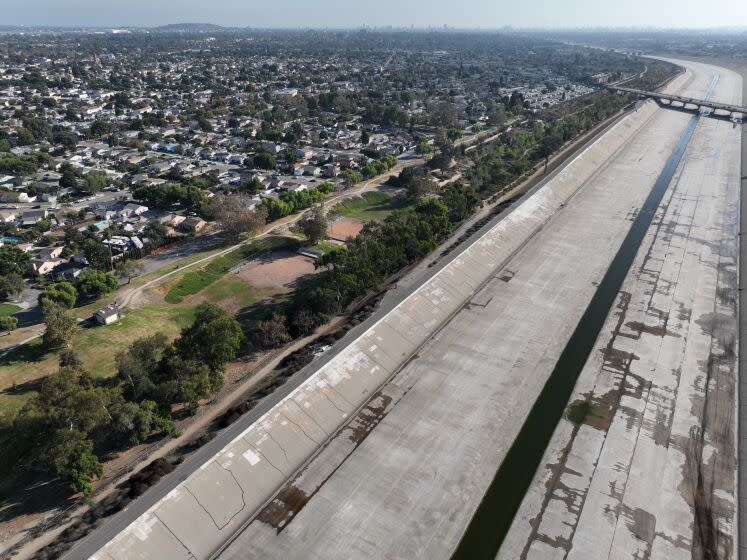Letters to the Editor: Concrete channels won't save L.A. in a mega-flood. What was paved over might

To the editor: Your article, "Major flood would hit Los Angeles Black communities disproportionately hard, study finds," makes clear our existing flood management system of concrete channels is inadequate to protect all Los Angeles residents during major storms. Retrofitting homes in low-income communities to protect against flooding is a necessary safeguard, but it is still a short-term fix that doesn't address the underlying risks.
To protect our most vulnerable communities from climate impacts, we must dramatically transform our approach to flood control. It is long past time to invest in durable nature-based solutions.
By expanding green space throughout Los Angeles, we can capture more stormwater before it reaches our rivers and creeks, while replenishing groundwater supplies. Green space adjacent to waterways serves as natural flood protection while providing numerous other benefits to park-poor communities.
It's time for local governments to embrace nature-based solutions to secure a safer and healthier future for Angelenos.
Ben Harris, Los Angeles
The writer is a staff attorney at LA Waterkeeper.
..
To the editor: As a civil engineer formerly with the U.S. Army Corps of Engineers, I worked on the planning and design of upgrades to the flood conveyance capacity of the Los Angeles River in the 1990s.
The recent UC Irvine study serves a very important purpose, namely to inform the public that flood control projects do not provide complete protection from all flood events regardless of how large. There is significant risk from infrequent large flood events in the Los Angeles basin, particularly in the downstream leveed portions of the Los Angeles River, tributary areas protected by local storm drains and coastal areas subject to high tides and storm surges.
Climate change is likely increasing the probability of larger and more intense storms, which must seem counterintuitive given the current mega-drought in the Southwest. Residents in higher-risk portions of the floodplain identified in this study should consider carrying flood insurance if possible.
Joseph Evelyn, La Cañada Flintridge
This story originally appeared in Los Angeles Times.

